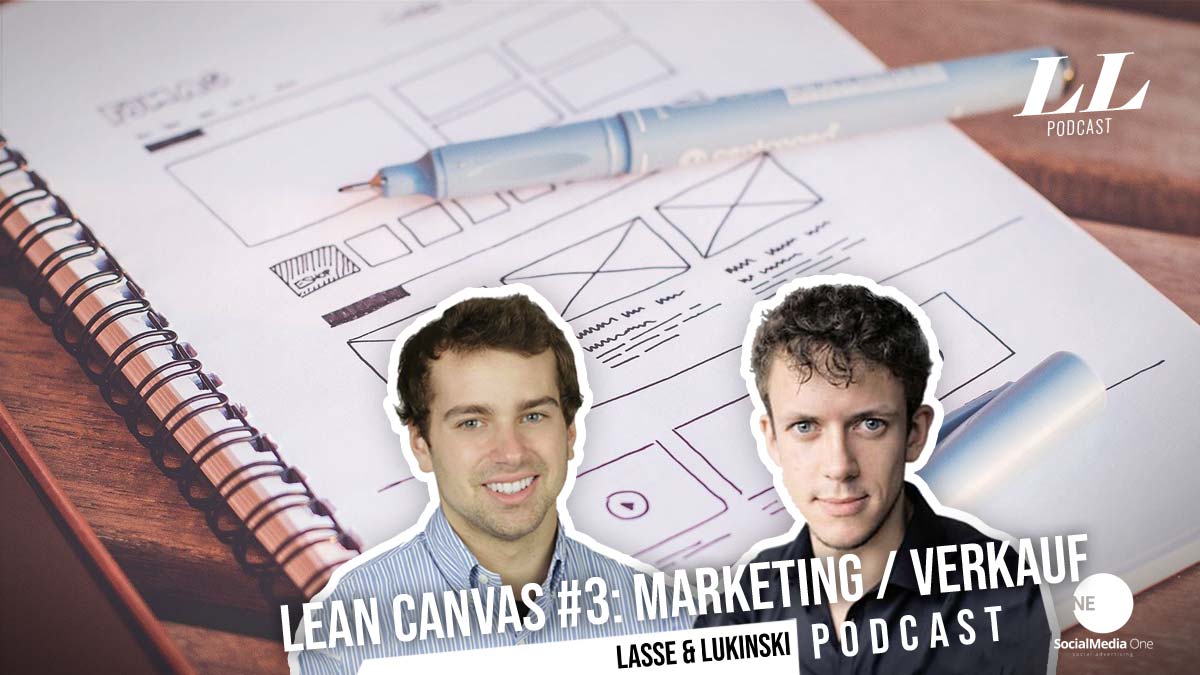Lean Canvas Part 2/3: Unfair Advantage, Metrics & Audience – Marketing Podcast
In the first part(Lean Canvas #1) you already got to know the topic around your business idea (i.e. problem, solution and USP). In the second part, we’ll deal with the big momentum for investors: the first metrics. In fact, many forget in the pitch that it actually comes down to them when it comes to investments, whether bank or investors. After that, we focus on the unfair advantage. This helps you to convince people even faster about you and your business idea. After that, with the target groups already in part 3(Lean Canvas #3), we lead over to marketing and finance. Now on Spotify!
Podcast episode on Spotify: Lean Canvas (2/3) Special
Back to overview: Marketing Podcast.
Now stream & learn for free on:
- Spotify – Marketing Podcast
- ITunes – Marketing Podcast
- Amazon – Marketing Podcast
- Deezer – Marketing Podcast
- Google – Marketing Podcast
Marketing Shorties: Lean Canvas
More Marketing Snippets? Follow us on Youtube, too. Topic of the week:
- Unfair pitch advantage! + Your X like Y
- Key figures: Prove your potential success
- Target Groups: Avatars and first movers
As a speaker, we show up to 200 participants in our workshop how to build a business. One part of this is the Lean Canvas. A simple way to develop business ideas and test them. On the second day, 40 groups then present their business ideas. A bit like “Höhle der Löwen”, you probably know the TV series. However, before it comes to the pitch, a solid business idea has to be in place. In this podcast episode we talk about that among other things.
Unfair pitch advantage! + Your X like Y
The episode starts with your (ultimate) “unfair advantage”. Simply put: You have 10 years of experience in sales, others don’t have that. Or, you can develop online shops yourself, very few can do that. All this saves you time, money and opens doors faster. Or in short: Your unfair advantage as a founder! First of all, here’s a tip to save 2 minutes of time in your pitch! With your “X like Y”. Simply put, this means: Your business idea is a platform where dog owners can get to know each other. To do this, you use the all-too-familiar Tinder effect. Swipe right: commitment. Swipe left: Decline. Simply put. So instead of explaining at length which technical functions you use, you simply say: “We are the Tinder for dog owners”!
Key figures: Buyers, production, etc.
In real investor pitches, many talk about their idea for 8 minutes and numbers for 1 minute – wrong! In this episode we will show you how important the field “key figures” alone is in the Lean Canvas. To put it simply: Calculate potentials! Example: you open a stylish food store in the city, with vegan snacks. Then ask yourself, for example: How many people are there in the immediate, run-wide vicinity that would stop by your store for vegan snacks. If so, how often would they stop by? How high can you set prices, also in terms of competition? How much vegan competition is there in general? How much does your direct competition sell for? These are all important metrics that give investors (and banks) a quick insight into your industry and your potential.
Target Groups: Avatars and first movers
Who is really important for your later marketing measures? The most common mistake in pitches: target groups from 20-99 years. Wrong! Your target group must be exact. Ideally, you create avatars for them, i.e. an exact description of the person. This exact, specific description brings many advantages. From more targeted advertising budgets to an exact address. For this we also show you the example of Amazon. Started as a bookstore, with ambitions to deliver everything to everyone. It did! In the beginning, the target group was very precise. An insight into target groups and avatars of the Lean Canvas, or company foundation. Also, first movers! They help you establish your business idea faster by being multipliers for you. You’ll learn what that means in this episode from the Marketing Podcast!
Lean Canvas Special: All Parts
Here you can find all parts of the Lean Canvas Special at a glance:
Part: Problem, solution and USP
Part 1: Problem, solution and USP
Part: Marketing and Finances
Part 3: Marketing and finance













